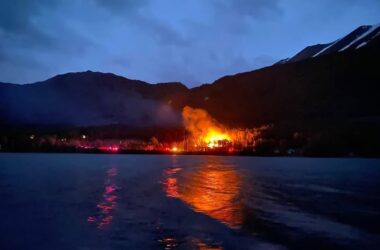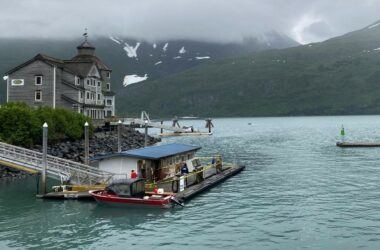A magnitude 4.7 earthquake shook southcentral Alaska on Wednesday, March 23 at 10:45 a.m. at a depth of 91.9 miles, according to the Alaska Earthquake Center. The earthquake was centered at 13 miles north of Iliamna Volcano and was widely felt in the Cook Inlet and Kenai Peninsula communities of Port Alsworth, Pedro Bay, Ninilchik, Anchor Point, and Clam Gulch in addition to being felt at Augustine Volcano and Redoubt Volcano. In the 20-to-80-mile radius, the earthquake lasted for roughly 19 – 25 seconds long.
Earthquakes in southcentral Alaska are produced by a number of different tectonic features, the strongest of which are generated by the megathrust fault that marks the contact zone between the subducting Pacific and overriding North American plates. The 1964 M9.2 Great Alaska Earthquake, which is still the second largest earthquake ever recorded worldwide, began under Prince William Sound. Intermediate depth seismicity (below 20 miles) occurs in the so-called Benioff Zone, where the subducting Pacific Plate descends towards the mantel beneath the North American Plate. The zone extends along Aleutian Arc, Alaska Peninsula and Cook Inlet and terminates beneath the northern foothills of the Alaska Range.







